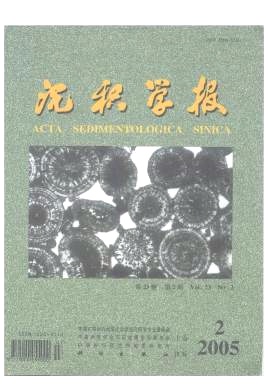HTML
| [1] | 1 Zheng H B,An Z S,Shaw J. New contributions to Chinese Plio-Pleistocene magnetostratigraphy[J].Physics of the Earth and Planetary Interiors, 1992. 146-156. 2 Sun D H,Liu T S,Chen M Y. Magnetostratigraphy and paleoclimate of red clay sequences from the Chinese Loess Plateau[J].Science in China,1997,(04):337-343. 3 Sun D H,Shaw J,An Z S. Magnetostratigraphy and paleoclimatic interpretation of a continuous 7.2 Ma late Cenozoic eolian sediments from the Chinese Loess Plateau[J]. Geophysical Research Letters,1998,(01):85-88. 4 Ding Z L,Sun J M,Liu T S. Wind-blown origin of the Pliocene red clay formation in the central Loess Plateau[J].China Earth and Planetary Science Letters,1998.135-143. 5 Ding Z L,Sun J M,Yang S L. Preliminary magnetostratigraphy of a thick eolian red clay-loess sequence at Lingtai the Chinese Loess Plateau[J]. Geophysical Research Letters,1998,(8):1225-1228. 6 丁仲礼,孙继敏,朱日祥. 黄土高原红粘土成因及上新世北方干旱化问题[J].第四纪研究,1997,(02):147-157. 7 鹿化煜,安芷生. 黄土高原红粘土与黄土-古土壤粘度特征对比-红粘土风成成因的新证据[J].沉积学报,1999,(02):226-232. 8 杨石岭,候圣山,王旭. 泾川晚三化红粘土的磁性地层及其与灵台剖面的对比[J].第四纪研究,2000,(05):423-434. 9 孙东怀,陈明扬,Shaw J. 晚新生代黄土高原风尘堆积序列的磁性地层年代与古气候记录[J].中国科学D辑,1998,(01):79-84. 10 郭正堂,彭淑贞,郝青振. 晚第三纪中国西北干旱化的发展及其与北极冰盖形成演化和青藏高原隆升的关系[J].第四纪研究,1999,(06):556-567. 11 安芷生,孙东怀,陈明扬. 黄土高原红粘土序列与晚第三纪的气候条件[J].第四纪研究,2000,(05):435-446. 12 An Z S,Wang S M,Wu X H. Eolian evidence from the Chinese Loess Plateau:the onset of the late Cenozoic great glaciation in the Northern Hemisphere and Qinghai-Xizang Plateau uplift forcing[J].Earth Science,1999,(03):258-271. 13 安芷生,刘晓东. 东亚季风气候的历史与变率[J].科学通报,2000,(3):238-249. 14 丁仲礼,杨石岭,孙继敏,刘东生. 2.6Ma前后大气环流重构的黄土-红粘土沉积证据[J].第四纪研究,1999,(03):277-281. 15 方小敏,李吉均,朱俊杰. 甘肃临夏盆地新生代地层绝对年代测定与划分[J].科学通报, 1997. 1457-1471. 16 邓涛,王晓鸣,倪喜军. 临夏盆地新生代地层及其哺乳动物化石证据[J].古脊椎动物学报,2003,(01):45-66. 17 薛祥煦,鹿化煜,周杰. 陕西旬邑新近系红土剖面粒度组成的古气候意义[J].沉积学报,2002,(01):119-123. 18 鹿化煜,安芷生. 洛川黄土粒度组成的古气候意义[J].科学通报,1997,(01):66-69. 19 鹿化煜,安芷生. 黄土高原黄土粒度组成的古气候意义[J].中国科学D辑,1998,(03):278-283. 20 苗晓东,孙有斌,鹿化煜. 黄土高原晚上新世红粘土粒度的空间变化[J].沉积学报,2001,(02):182-185. 21 Quade J,Cerling T E,BowmanJ R. Development of Asian monsoon revealed by marked ecological shfit during the latest Miocene in northern Pakistan[J].NATURE,1998.163-166. 22 Molnar P,Martinod J,Engl P. Mantle dynamics,uplift of the Tibetan Plateau,and the Indian monsoon[J].Reviews of Geophysics,1993.357-396. 23 Harrison T M,CopelP,Kidd W S F. Raising Tibet[J].Science,1992.1663-1670. 24 李吉均,方小敏. 临夏地区30.6~5.0Ma红层孢粉植物群与气候演化记录[J].Chinese Science Bulletin,1998,(03):301-304. 25 Rea D K,Snoeckx H,Joseph L H. Late Cenozoic eolian deposition in the North Pacific:Asian drying,Tibetan uplift & cooling of the Northern Hemisphere[J]. Paleoceanography,1998.215-224. 26 施雅风,汤懋基,马玉贞. 青藏高原二期隆升与亚洲季风孕育探讨[J].中国科学D辑,1998,(03):262-271. 27 彭华. 关于青藏高原隆升对中国气候影响的讨论[J].干旱区地理,1994,(03):1-9. 28 刘东生,郑锦平,郭正堂. 亚州季风系统的起源和发展及其两极冰和区域构造运动时代耦合性[J].第四纪研究,1998,(08):194-203. 29 陈隆勋. 东亚季风[M].北京:气象出版社,1991.1-262. 30 李吉均,赵志军. 德日进"亚洲干极"理论的现实意义[J].第四纪研究,2003,(04):366-371. 31 张云翔,岳乐平,陈丹玲. 中国北部新第三纪红层划分的岩石学标志及其意义[J].地层学杂志,1997,(01):63-67. |






 DownLoad:
DownLoad: